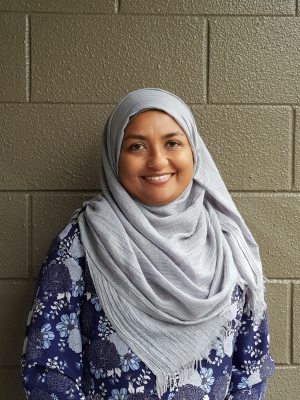Content-Based Instruction for MLEs: Practical Tips by Grade and Subject

In today's vibrant multilingual classrooms, teachers are tasked with the important responsibility of supporting both the academic and language development of their students. This means that every teacher must also be a language teacher, regardless of their subject area. Content-based instruction (CBI) offers a powerful approach to achieve this dual goal. By integrating language objectives with meaningful content learning, CBI helps multilingual learners of English (MLEs) acquire both subject knowledge and the academic language necessary to succeed across the curriculum.
What Is Content-Based Instruction?
CBI is a pedagogical approach where language learning is woven directly into the teaching of academic subjects. Rather than isolating language skills into separate classes, when teachers adopt CBI, students are engaged in learning subject content through authentic tasks that require the use of the target language for real purposes. This means that language learning happens through content, rather than separately. In a CBI classroom, students might learn science vocabulary and associated language structures by conducting experiments or develop mathematical language while solving real-world problems.
CBI can take many forms. It ranges from highly structured programs (such as the SIOP Model) to more informal practices of integration where teachers embed language support strategies throughout content lessons. Regardless of the model, the key principle of CBI is that students learn language and academic content simultaneously, with intentional planning and scaffolding by teachers.
Why Is CBI Important?
CBI is supported by decades of research in language acquisition and educational theory. Jim Cummins distinguished between basic interpersonal communication skills (often referred to as BICS, or informal social language) and cognitive academic language proficiency (or CALP, also referred to as academic language), highlighting that academic language requires explicit teaching and support, ideally within content areas. Many MLEs may be conversationally fluent but struggle with the more complex, discipline-specific language required for academic success. CBI addresses this gap by embedding language development within cognitively demanding tasks. Students are more likely to acquire new vocabulary, grammar, and discourse patterns when they are motivated by authentic academic tasks rather than decontextualized language-focused exercises.
Research has demonstrated that MLEs benefit from instructional scaffolding that allows them to engage with cognitively challenging material while simultaneously developing language proficiency through social interaction within meaningful, purposeful activities. This approach may be important not just for MLEs, as it can be useful for all students because it helps to strengthen their language and academic skills.
How to Incorporate CBI Across Curriculum Areas and School Levels
CBI is flexible and adaptable across grade levels and subjects. Following are some practical ideas.
Early Childhood
-
- Science: Encourage observation activities (e.g., plant growth, weather changes), using structured talk routines like "I see... I think... I wonder...". Provide sentence frames and visual supports to scaffold expressive language.
- Literacy: Use storytelling, chants, and interactive read-alouds. Repeated exposure to rich language, accompanied by gestures and pictures, helps young learners connect meaning with language structures.
- Numeracy: Introduce sorting, counting, and patterning games. Embed mathematical language naturally (e.g., "more than," "fewer," "same as") through manipulatives and playful interactions.
Primary/Elementary School
-
- Literacy: Integrate thematic units (e.g., "festivals," "weather") with writing and speaking activities that incorporate specific language objectives, such as using transition words or persuasive language.
- Mathematics: Teach academic mathematics vocabulary explicitly (e.g., "sum," "difference," "equivalent") and model mathematical reasoning aloud using think-aloud strategies. Visual supports like charts and number lines can enhance comprehension.
- Science: Scaffold inquiry-based activities with graphic organizers, lab notebooks, and shared writing tasks. Students might write observations using structured templates before moving to more independent writing.
- Social Studies: Engage students in projects like creating a classroom "community" or "timeline of inventions." Provide structured language support for cause-and-effect explanations and sequencing events.
Secondary School
-
- Science: Support lab reports and scientific writing with clear models, sentence starters for hypotheses and conclusions, and peer review checklists. Emphasize discourse practices like comparing evidence and drawing conclusions.
- Mathematics: Encourage mathematics journaling and group problem-solving discussions. Use sentence frames that promote explanation ("I solved it this way because...") and argumentation ("I disagree because...").
- History/Social Studies: Structure debates, source analysis tasks, and historical narratives with academic discussion frames ("According to the text..."; "One important consequence was..."). Emphasise critical thinking and perspective-taking.
- Arts: Use art critiques, reflections, and portfolio presentations to develop descriptive and analytical language. Sentence starters such as "This piece makes me feel..." or "The artist uses colour to..." can scaffold deeper discussions.
Strategies for Effective CBI Implementation
-
- Dual Objectives: Always identify both a content objective (what students will learn) and a language objective (how students will use language) during lesson planning.
- Scaffolding: Use multiple scaffolding strategies, including modelling, visual aids, sentence starters, graphic organisers, and collaborative activities.
- Differentiation: Tailor support based on students’ language proficiency levels. Offer multiple entry points to learning and adjust expectations for output accordingly.
- Background Knowledge: Activate and build background knowledge explicitly. This helps students connect new learning to what they already know, an essential step for both comprehension and engagement.
- Collaborative Learning: Design opportunities for structured student interaction, including think-pair-share, peer interviews, and small-group projects. Language is best developed through purposeful use in social contexts.
Reflect on Your Own Teaching
Consider some of your recent lessons and how well you are supporting both language and content learning. Use the following questions to analyse your own teaching and lesson planning practices to identify gaps and areas for improvement.
-
- Have I intentionally planned both content objectives and language objectives? How clearly are these objectives communicated to students?
- Have I identified the specific academic language (vocabulary, structures, functions) that students need to access the lesson content?
- What scaffolding strategies am I currently using to support both content understanding and language development?
- How am I supporting students to use academic discourse (e.g., explaining, justifying, comparing) during interactions?
- How am I adapting tasks and language expectations for students at different language proficiency levels?
- Do I encourage the use of students’ full linguistic repertoires (e.g., bilingual resources, translanguaging strategies) where appropriate?
- Are my assessments only measuring content knowledge, or do they also recognize language growth?
-
- How do I give feedback that supports students’ content learning and academic language development?
- What is one specific goal I can set for my next unit or lesson to strengthen my integration of language and content?
Conclusion
CBI empowers MLEs by honouring their full linguistic and cognitive capacities. Through intentional integration of content and language, educators can create inclusive, challenging, and supportive classrooms where all students can thrive. Incorporating CBI into classroom practice requires thoughtful planning, a belief in students’ abilities, and a commitment to equitable education. To be effective, it requires educators to work collaboratively to offer a whole-school approach. By embedding language development within rich, meaningful content learning, we open doors to academic success and foster confident, capable MLEs.
Further Reading (added 30 May 2025)
- Teacher Development for Content-Based Language Education: International Perspectives, edited by Susan Ballinger, Ruth Fielding, and Diane J. Tedick
This comprehensive volume addresses the preparation of teachers for integrating content and language instruction, including empirical studies from various regions. -
Content-Based Foreign Language Teaching: Curriculum and Pedagogy for Developing Advanced Thinking and Literacy Skills, by Laurent Cammarata
This book focuses on CBI in foreign language contexts, emphasising higher-order thinking and literacy. -
How to Integrate Content and Language Learning Effectively for English Language Learners
This concise and research-based article in the Eurasia Journal of Mathematics, Science and Technology Education, 13(7b), pp. 4237–4260, summarises key insights into CBI. -
Making Content Comprehensible for Multilingual Learners: The SIOP Model, 6th edition, by Jana Echevarria, MaryEllen Vogt, and Deborah J. Short
This book introduces the Sheltered Instruction Observation Protocol (SIOP) model, a practical framework integrating content and language instruction. -
Amplifying the Curriculum: Designing Quality Learning Opportunities for English Learners, edited by Aída Walqui and George C. Bunch
This book is a practical resource to guide teachers to design tasks, lessons, and units of study to enable learners to engage in meaningful language and content integrated learning across different curriculum areas.

